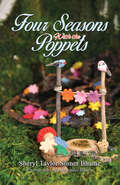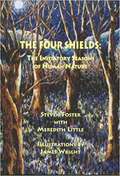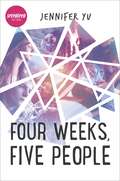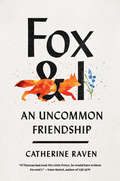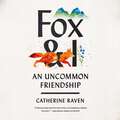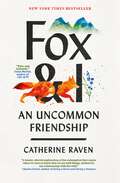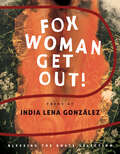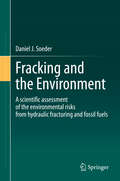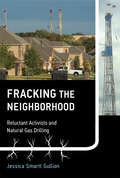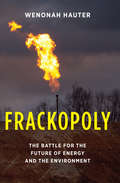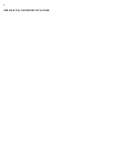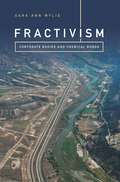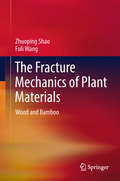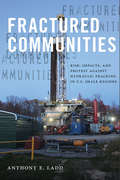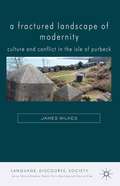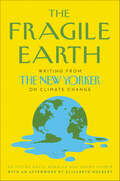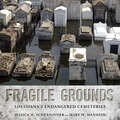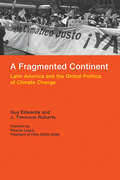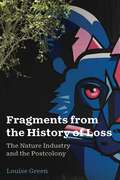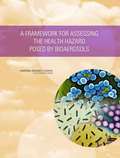- Table View
- List View
Four Seasons with the Poppets
by Sheryl Taylor Sinner BhameAs with any enduring fairy tale, children will want to listen to Four Seasons with the Poppets again and again, to revisit the charming world of the Poppets. The seasonal stories speak to a child’s senses, describing picturesque scenes. In spring, how pretty the forest looked when the flowers were in bloom; in summer, the animals would come visit to hear Margie’s and Millie’s songs; in fall, gathering pine cones for Mother Poppet’s fires; in winter, ‘The roasted acorn smelled just like Christmas dinner should smell.’ Throughout the story are life lessons: appreciation for and conservation of the world around them, inclusion and encouragement of others, teamwork, and neighbourliness. Children are comforted, learning about the continuity of the seasons. “When Father Poppet saw how the sun made the frozen creek look like a sparkling white path, he decided to whittle ice skates for the children next spring, out of soft green wood, that would dry and harden in time for Christmas next winter.” When children use their imagination, it develops their ability to problem solve.
The Four Shields: The Initiatory Seasons of Human Nature
by Steven Foster Meredith LittleThe Four Shields: The Initiatory Seasons of Human Nature by Steven Foster and Meredith Little.
Four Weeks, Five People
by Jennifer YuThey're more than their problems Obsessive-compulsive teen Clarissa wants to get better, if only so her mother will stop asking her if she's okay. Andrew wants to overcome his eating disorder so he can get back to his band and their dreams of becoming famous. Film aficionado Ben would rather live in the movies than in reality. Gorgeous and overly confident Mason thinks everyone is an idiot. And Stella just doesn't want to be back for her second summer of wilderness therapy. As the five teens get to know one another and work to overcome the various disorders that have affected their lives, they find themselves forming bonds they never thought they would, discovering new truths about themselves and actually looking forward to the future.
Fox and I: An Uncommon Friendship
by Catherine RavenA solitary woman’s inspiring, moving, surprising, and often funny memoir about the transformative power of her unusual friendship with a wild fox, a new window into the natural world, and the introduction of a remarkable literary talent. <P><P> Catherine Raven left home at fifteen, fleeing an abusive, disdainful father and an indifferent mother. More comfortable in nature than among people, she worked as a National Park ranger, eventually earning a PhD in biology. She built a house on an isolated plot of land in Montana, teaching remotely and leading field classes. One day, she realized that the mangy-looking fox who had been appearing on her property was now showing up every day at 4:15 p.m. She had never had a regular visitor before. <P><P> How do you even talk to a fox? So, she brought out her camping chair, sat as close to him as she dared, and began reading to him from The Little Prince. Her scientific training had taught her not to anthropomorphize animals, but as she grew to know him, his personality revealed itself—and he became her friend. But friends cannot always save each other from the uncontained forces of nature. Fox and I is a poignant and dramatic tale of friendship, transformation, and coping with inevitable loss—and of how that loss can become meaningful. It is also the introduction of an original, imaginative, stunning literary voice. <P><P><b>A New York Times Best Seller</b>
Fox and I: An Uncommon Friendship
by Catherine Raven Spiegal LlcINSTANT NEW YORK TIMES BESTSELLER"If there's one book you pick up this summer, make it this one." - Washington Post"A wise and intimate book about a solitary woman, a biologist by training, who befriends a fox." - Yann Martel, author of Life of PiCatherine Raven has lived alone since the age of 15. After finishing her PhD in biology, she built herself a tiny cottage on an isolated plot of land in Montana, in a place as far away from other people as possible. She viewed the house as a way station, a temporary rest stop where she could gather her nerves and fill out applications for what she hoped would be a real job that would help her fit into society.Then one day she realises she has company: a mangy-looking fox who starts showing up at her house every afternoon at 4.15pm. She has never had a visitor before. How do you even talk to a fox? She brings out her camping chair, sits as close to him as she dares, and begins reading to him from The Little Prince. Her scientific training has taught her not to anthropomorphise animals, yet as she grows to know him, his personality reveals itself and the two form a powerful bond - shaken only when natural disaster threatens to destroy their woodland refuge.Fox and I is a story of survival and transformation, a captivating tale of a friendship between two species in a shared habitat, battling against the uncontainable forces of nature on one side and humanity on the other - immersive, original and utterly unforgettable.
Fox and I: An Uncommon Friendship
by Catherine Raven Spiegal & LLCINSTANT NEW YORK TIMES BESTSELLER"If there's one book you pick up this summer, make it this one." - Washington Post"A wise and intimate book about a solitary woman, a biologist by training, who befriends a fox." - Yann Martel, author of Life of PiCatherine Raven has lived alone since the age of 15. After finishing her PhD in biology, she built herself a tiny cottage on an isolated plot of land in Montana, in a place as far away from other people as possible. She viewed the house as a way station, a temporary rest stop where she could gather her nerves and fill out applications for what she hoped would be a real job that would help her fit into society.Then one day she realises she has company: a mangy-looking fox who starts showing up at her house every afternoon at 4.15pm. She has never had a visitor before. How do you even talk to a fox? She brings out her camping chair, sits as close to him as she dares, and begins reading to him from The Little Prince. Her scientific training has taught her not to anthropomorphise animals, yet as she grows to know him, his personality reveals itself and the two form a powerful bond - shaken only when natural disaster threatens to destroy their woodland refuge.Fox and I is a story of survival and transformation, a captivating tale of a friendship between two species in a shared habitat, battling against the uncontainable forces of nature on one side and humanity on the other - immersive, original and utterly unforgettable.
The Fox and the Forest Fire
by Danny PopoviciA story of hope and friendship, in which resilience trumps tragedy in the wake of a forest fire.After moving from the city, one boy discovers his new home in the woods isn't so bad—there is friendship in the midst of the forest. But when he spots a fire on the horizon that soon engulfs everything he's come to know—the bugs, the plants, the fox who keeps him company—he is forced to flee. When his newfound comfort goes up in smoke, how can he ever feel at home again?In a forest fire, so much can change in an instant. But both fox and boy learn that there are some things fire cannot burn. With time, the forest will regrow, the animals will return to their home, and so will the boy and his mom.As we all search for tools for understanding the destruction of forest fires, this touching story shows that hope, friendship, and resilience shine the brightest.TIMELY: As fires rage over a wider swath of the United States and internationally, and as fire season lengthens year after year, and sets new records year after year, these are themes communities are engaging with daily during fire season.WRITTEN BY A FIREFIGHTER: The author-illustrator was a volunteer firefighter, giving him a unique perspective on the topic of forest fires.EMOTIONALLY RESONANT: This moving story ends with rebuilding—both for humans and for nature—and with a truly uplifting message of resilience.COMMUNITY-BUILDING: A wonderful resource for families and communities experiencing the aftermath of a fire or other natural disasters, as well as anyone looking to empathize with, and better understand, those communities in need.CLASSROOM RESOURCE: Not only is this the perfect resource for talking about topics like the environment, natural disasters, forest management, and emergency preparedness, this book will also spark important conversations about coping with personal and community tragedies. The author-illustrator reflects on his own experiences with forest fires in the autho's note, and backmatter provides additional context.Perfect for: Parents, Educators, Nature lovers
fox woman get out!
by India Lena GonzálezTake the body and split it wide open. Fill it with light. See the multiple interiors, the layered death, the familial mythology, the throb and splendor of being, the shedding of the body altogether: this is fox woman get out! Traveling from the corporeal to the cosmic, from life to death and back again, fox woman get out! is a full-throated performance of humanity in search of truth, ancestry, and artistic authenticity. Moving through themes of lineage, twinship, femininity and masculinity, reclamation of Indigeneity, dance, gender roles, and longing, González’s poems are a crescendo on the page. Part ecstatic elegy, part spell, this is a betwixt poetics, a kaleidoscopic, disruptive, and meditative work.
Foxes (Worldlife Library)
by David MacdonaldFoxes, members of the wild dog family, have long been associated with intelligence and cunning, and they are an integral part of folklore. Worldwide they comprise a group of more than twenty species, all characterized by grace and adaptability. Because they are closely related to domestic dogs, they are seemingly familiar, yet their wildness makes them mysterious. Foxes is a comprehensive guide to the history, evolution, distribution, and social structure of foxes worldwide, from the red fox--the most widely distributed of any wild carnivore--to the Arctic fox--whose range encircles the North Pole--to Blanford's fox--a desert fox discovered in Israel. David Macdonald is Director of the Wildlife Conservation Research Unit at Oxford University and holds an A.D. White Professorship at Cornell University and a Senior Research Fellowship at Lady Margaret Hall, Oxford. He is acknowledged as a world expert on canids and is Chairman of the International United Commission for Nature Canid Specialist Group. Following a childhood fascination with wildlife, Macdonald's research on foxes began in 1972 with work that won the Zoological Society's Huxley Medal and has subsequently led him to publish papers on 15 different species of canid worldwide. He is also known for his documentary films and books, and has twice been awarded the Natural World Natural History Author of the Year Originally from Glasgow, David Macdonald lives with his wife and three children on their smallholding in Oxfordshire.
Fracking and the Environment: A scientific assessment of the environmental risks from hydraulic fracturing and fossil fuels
by Daniel J. SoederThis book provides a systematic scientific approach to the understanding of hydraulic fracturing (fracking) as a hydrocarbon extraction technology and its impact on the environment. The book addresses research from the past decade to assess how fracking can affect air, water, landscapes and ecosystems, and presents the subject in the context of the history of fracking and shale gas development in the United States, describing what is known and not known about environmental impacts, and the broader implications of fossil energy use, climate change, and technology development. In 9 chapters, the author lays out how and why hydraulic fracturing was developed, what driving forces existed at the beginning of the so-called "shale revolution", how success was achieved, and when and why public acceptance of the technology changed. The intended audience is scientific people who are concerned about fracking, but perhaps do not know all that much about it. It is also intended for lay people who would be interested in understanding the technical details of the process and what effects it might or might not be having on the environment. The book is written at a level that is both understandable and technically correct. A further goal is to give some useful insights even to experienced petroleum geologists and engineers who have been doing fracking for many years.
Fracking the Neighborhood: Reluctant Activists and Natural Gas Drilling (Urban and Industrial Environments)
by Jessica Smartt GullionWhat happens when natural gas drilling moves into an urban area: how communities in North Texas responded to the environmental and health threats of fracking.When natural gas drilling moves into an urban or a suburban neighborhood, a two-hundred-foot-high drill appears on the other side of a back yard fence and diesel trucks clog a quiet two-lane residential street. Children seem to be having more than the usual number of nosebleeds. There are so many local cases of cancer that the elementary school starts a cancer support group. In this book, Jessica Smartt Gullion examines what happens when natural gas extraction by means of hydraulic fracturing, or “fracking,” takes place not on wide-open rural land but in a densely populated area with homes, schools, hospitals, parks, and businesses. Gullion focuses on fracking in the Barnett Shale, the natural-gas–rich geological formation under the Dallas–Fort Worth metroplex. She gives voice to the residents—for the most part educated, middle class, and politically conservative—who became reluctant anti-drilling activists in response to perceived environmental and health threats posed by fracking.Gullion offers an overview of oil and gas development and describes the fossil-fuel culture of Texas, the process of fracking, related health concerns, and regulatory issues (including the notorious “Halliburton loophole”). She chronicles the experiences of community activists as they fight to be heard and to get the facts about the safety of fracking.Touted as a greener alternative and a means to reduce dependence on foreign oil, natural gas development is an important part of American energy policy. Yet, as this book shows, it comes at a cost to the local communities who bear the health and environmental burdens.
Frackopoly: The Battle for the Future of Energy and the Environment
by Wenonah Hauter&“The definitive story on how big oil and gas corporations captured our political system . . . and the growing grassroots movement to retake our democracy&” (Mark Ruffalo). Over the past decade a new and controversial energy extraction method known as hydraulic fracturing, commonly referred to as fracking, has rocketed to the forefront of US energy production. With fracking, millions of gallons of water, dangerous chemicals, and sand are injected under high pressure deep into the earth, fracturing hard rock to release oil and gas. Wenonah Hauter, one of the nation&’s leading public interest advocates, argues that the rush to fracking is dangerous to the environment and treacherous to human health. Frackopoly describes how the fracking industry began; the technologies that make it possible; and the destruction and poisoning of clean water sources with the release of harmful radiation from deep inside shale deposits, creating what the author calls &“sacrifice zones&” across the American landscape. The book also examines the powerful interests that have supported fracking, including leading environmental groups, and offers a thorough debunking of its supposed economic benefits. With a wealth of new data, Frackopoly is an essential and riveting read for anyone interested in protecting the environment and ensuring a healthy and sustainable future for all Americans. &“A passionate history and critique of the energy industry, from Standard Oil to Enron . . . . [A] journalistic exposé of fracking outrages in which aggressive entrepreneurs in pursuit of profits wreak havoc on the land and poison the water.&” —Kirkus Reviews &“A truly powerful manifesto about one of the greatest environmental fights on our planet today—from one of its greatest champions!&” —Bill McKibben, environmentalist and author of Oil and Honey
The Fractal Geometry Of Nature
by Benoit MandelbrotExplore the wondrously complex repeating shapes of the natural world in The Fractal Geometry of Nature. Written in a style that is accessible to a wide audience, computer scientist, professor, mathematician, economist, and visionary Benoit B Mandelbrot's fascinating work has inspired popular interest in the geometry inherent in the natural world. Unlike the squares, circles, spheres, and cones of fundamental geometry, nature has rough edges and no straight lines or perfect curves. Mandelbrot observed that, even with this roughness, there still exists a kind of symmetry, which he dedicated his work to document and study. This became the basis for his development of a new kind of geometry; indeed, he coined the term "fractal."
Fractivism: Corporate Bodies and Chemical Bonds
by Sara Ann WylieFrom flammable tap water and sick livestock to the recent onset of hundreds of earthquakes in Oklahoma, the impact of fracking in the United States is far-reaching and deeply felt. In Fractivism Sara Ann Wylie traces the history of fracking and the ways scientists and everyday people are coming together to hold accountable an industry that has managed to evade regulation. Beginning her story in Colorado, Wylie shows how nonprofits, landowners, and community organizers are creating novel digital platforms and databases to track unconventional oil and gas well development and document fracking's environmental and human health impacts. These platforms model alternative approaches for academic and grassroots engagement with the government and the fossil fuel industry. A call to action, Fractivism outlines a way forward for not just the fifteen million Americans who live within a mile of an unconventional oil or gas well, but for the planet as a whole.
The Fracture Mechanics of Plant Materials: Wood And Bamboo
by Zhuoping Shao Fuli WangThis book introduces readers to the application of fracture mechanics and mesomechanics to the analysis of the fracture behaviors of wood and bamboo. It presents a range of research methods to study the fracture behaviors of wood and bamboo, taking into account their various fracture mechanisms resulting from differences in their macroscopic and microscopic structures. It combines theoretical analysis with experiments, as well as various mathematical tools and experimental approaches. The research methods are illustrated by simple schematic diagrams, and the results obtained are largely presented as tables and figures, helping to make the book concise and compact. As such, it provides a valuable guide to the development of new biocomposites that possess exceptional strength and toughness properties and successfully overcome the shortcomings of biomaterials.
Fractured Communities: Risk, Impacts, and Protest Against Hydraulic Fracking in U.S. Shale Regions (Nature, Society, and Culture)
by Anthony E. Ladd Stephanie A. Malin Hilary Boudet Sherry Cable Brittany Gaustad Peter Hall James Maples Tamara Mix Carmel Price Dakota K.T. Raynes Stacia Ryder Suzanne Staggenborg Trang Tran Ion Bogdan Vasi Cameron Thomas Whitley Patricia WidenerWhile environmental disputes and conflicts over fossil fuel extraction have grown in recent years, few issues have been as contentious in the twenty-first century as those surrounding the impacts of unconventional natural gas and oil development using hydraulic drilling and fracturing techniques—more commonly known as “fracking”—on local communities. In Fractured Communities, Anthony E. Ladd and other leading environmental sociologists present a set of crucial case studies analyzing the differential risk perceptions, socio-environmental impacts, and mobilization of citizen protest (or quiescence) surrounding unconventional energy development and hydraulic fracking in a number of key U.S. shale regions. Fractured Communities reveals how this contested terrain is expanding, pushing the issue of fracking into the mainstream of the American political arena.
A Fractured Landscape of Modernity
by James WilkesThis book uses the contradictions, fractures and coincidences of a twentieth-century rural landscape to explore new methods of writing place beyond 'new nature writing'. In doing so it opens up new ways of reading modernist artists and writers such as Vanessa Bell, Mary Butts and Paul Nash.
The Fragile Earth: Writing from The New Yorker on Climate Change
by Elizabeth KolbertA New York Times New & Noteworthy BookOne of the Daily Beast’s 5 Essential Books to Read Before the ElectionA collection of the New Yorker’s groundbreaking reporting from the front lines of climate change—including writing from Bill McKibben, Elizabeth Kolbert, Ian Frazier, Kathryn Schulz, and moreJust one year after climatologist James Hansen first came before a Senate committee and testified that the Earth was now warmer than it had ever been in recorded history, thanks to humankind’s heedless consumption of fossil fuels, New Yorker writer Bill McKibben published a deeply reported and considered piece on climate change and what it could mean for the planet. At the time, the piece was to some speculative to the point of alarmist; read now, McKibben’s work is heroically prescient. Since then, the New Yorker has devoted enormous attention to climate change, describing the causes of the crisis, the political and ecological conditions we now find ourselves in, and the scenarios and solutions we face. The Fragile Earth tells the story of climate change—its past, present, and future—taking readers from Greenland to the Great Plains, and into both laboratories and rain forests. It features some of the best writing on global warming from the last three decades, including Bill McKibben’s seminal essay “The End of Nature,” the first piece to popularize both the science and politics of climate change for a general audience, and the Pulitzer Prize–winning work of Elizabeth Kolbert, as well as Kathryn Schulz, Dexter Filkins, Jonathan Franzen, Ian Frazier, Eric Klinenberg, and others. The result, in its range, depth, and passion, promises to bring light, and sometimes heat, to the great emergency of our age.
Fragile Grounds: Louisiana's Endangered Cemeteries (America's Third Coast Series)
by Jessica H. Schexnayder Mary H. ManheinRecipient of a 2018 Preserve Louisiana Award and a 2018 Coastal Stewardship AwardFragile Grounds compiles stories and photographs of endangered cemeteries throughout Louisiana's coastal zone and beyond. These burial places link the fragile land to the frailty of the state's threatened community structures. The book highlights the state's vibrant diversity by showing its unique burial customs and traditions, while it also identifies the urgent need for ongoing documentation of cultural elements at risk.Cemeteries associated with the culturally rich communities of Louisiana reflect the history and global settlement patterns of the state. Yet many are endangered due to recurring natural and man-made events. Nearly 80 percent of the nation's coastal land loss occurs in Louisiana. Coastal erosion, sinking land, flooding, storm surge, and sea-level rise have led to an inland migration that threatens to unravel the fabric of Louisiana and, by association, hastens the demise of its burial places.As people are forced inland, migrants abandon, neglect, or often overlook cemeteries as part of the cultural landscape. In terms of erosion, when the land goes, the cemetery goes with it. Cemeteries fall prey to inland and coastal flooding. As cities grow outward, urban sprawl takes over the landscape. Cemeteries lose out to forces such as expansion, eminent domain, and urban neglect. Not only do cemeteries give comfort for the living, but they also serve as a vital link to the past. Once lost, that past cannot be recovered.
A Fragmented Continent: Latin America and the Global Politics of Climate Change (Politics, Science, and the Environment)
by Guy Edwards J. Timmons RobertsHow Latin American countries became leading voices and innovators on addressing climate change—and what threatens their leadership.Latin American countries have increased their influence at the United Nations climate change negotiations and offered potential solutions on coping with global warming. But in the face of competing priorities, sometimes these climate policies are jettisoned, undermined, or simply ignored. A Fragmented Continent focuses on Latin America's three major blocs at the U.N. climate negotiations and how they attempt to balance climate action with building prosperity. Brazil has reduced its deforestation but continues its drive for economic growth and global recognition. A leftist group led by Venezuela, Bolivia, and Ecuador decries the injustice of climate change but is highly dependent on the export of fossil fuels. A new group, including Chile, Costa Rica, and Peru and supported by Mexico, offers sharp reductions in their carbon emissions in return for greater action by others; these countries now have to deliver on their promises. Weaving together issues of politics and economy, trade, foreign policy, civil society, and environmental protection, A Fragmented Continent offers a long-missing perspective on one of this century's greatest challenges and neglected regions.
Fragments from the History of Loss: The Nature Industry and the Postcolony (AnthropoScene: The SLSA Book Series #5)
by Louise GreenThe Anthropocene’s urgent message about imminent disaster invites us to forget about history and to focus on the present as it careens into an unthinkable future. To counter this, Louise Green engages with the theoretical framing of nature in concepts such as the "Anthropocene," "the great acceleration," and "rewilding" in order to explore what the philosophy of nature in the era of climate change might look like from postcolonial Africa.Utilizing a practice of reading developed in the Frankfurt school, Green rearranges narrative fragments from the "global nature industry," which subjugates all aspects of nature to the logic of capitalist production, in order to disrupt preconceived notions and habitual ways of thinking about how we inhabit the Anthropocene. Examining climate change through the details of everyday life, particularly the history of conspicuous consumption and the exploitation of Africa, she surfaces the myths and fantasies that have brought the world to its current ecological crisis and that continue to shape the narratives through which it is understood. Beginning with African rainforest exhibits in New York and Cornwall, Green discusses how these representations of the climate catastrophe fail to acknowledge the unequal pace at which humans consume and continue to replicate imperial narratives about Africa. Examining this history and climate change through the lens of South Africa’s entry into capitalist modernity, Green argues that the Anthropocene redirects attention away from the real problem, which is not human’s relation with nature, but people’s relations with each other.A sophisticated, carefully argued call to rethink how we approach relationships between and among humans and the world in which we live, Fragments from the History of Loss is a challenge to both the current era and the scholarly conversation about the Anthropocene.
Fragments from the History of Loss: The Nature Industry and the Postcolony (AnthropoScene)
by Louise GreenThe Anthropocene’s urgent message about imminent disaster invites us to forget about history and to focus on the present as it careens into an unthinkable future. To counter this, Louise Green engages with the theoretical framing of nature in concepts such as the “Anthropocene,” “the great acceleration,” and “rewilding” in order to explore what the philosophy of nature in the era of climate change might look like from postcolonial Africa.Utilizing a practice of reading developed in the Frankfurt school, Green rearranges narrative fragments from the “global nature industry,” which subjugates all aspects of nature to the logic of capitalist production, in order to disrupt preconceived notions and habitual ways of thinking about how we inhabit the Anthropocene. Examining climate change through the details of everyday life, particularly the history of conspicuous consumption and the exploitation of Africa, she surfaces the myths and fantasies that have brought the world to its current ecological crisis and that continue to shape the narratives through which it is understood. Beginning with African rainforest exhibits in New York and Cornwall, Green discusses how these representations of the climate catastrophe fail to acknowledge the unequal pace at which humans consume and continue to replicate imperial narratives about Africa. Examining this history and climate change through the lens of South Africa’s entry into capitalist modernity, Green argues that the Anthropocene redirects attention away from the real problem, which is not human’s relation with nature, but people’s relations with each other.A sophisticated, carefully argued call to rethink how we approach relationships between and among humans and the world in which we live, Fragments from the History of Loss is a challenge to both the current era and the scholarly conversation about the Anthropocene.
A Framework for Assessing the Health Hazard Posed by Bioaerosols
by National Research Council of the National AcademiesBiological warfare agent (BWA) detectors are designed to provide alerts to military personnel of the presence of dangerous biological agents. Detecting such agents promptly makes it possible to minimize contamination and personnel exposure and initiate early treatment. It is also important, though, that detectors not raise an alarm when the situation does not warrant it. The question considered in this book is whether Agent-Containing Particles per Liter of Air (ACPLA) is an appropriate unit of measure for use in the evaluation of aerosol detectors and whether a better, alternative measure can be developed. The book finds that ACPLA alone cannot determine whether a health threat exists. In order to be useful and comparable across all biological agents and detection systems, measurements must ultimately be related to health hazard. A Framework for Assessing the Health Hazard Posed by Bioaerosols outlines the possibility of a more complex, but more useful measurement framework that makes it possible to evaluate relative hazard by including agent identity and activity, particle size, and infectious dose.
Frameworks for Water Law Reform
by Sarah HendryThe world is currently experiencing unprecedented global change, with population increase, urbanisation, climate change and environmental degradation combining to make management of freshwater resources a critical policy focus of the twenty-first century. This timely book designs and develops an original, analytical framework for water law reform processes, using case studies across four jurisdictions. Addressing the four principal areas of water law - integrated water resource management (IWRM) and river basin planning, water rights and allocation, water pollution and quality, and water services - this book provides a comprehensive study of water law, within the context of global and regional policy agendas. Case studies from England, Scotland, South Africa and Queensland, Australia, are presented, providing comparators from both common law and mixed jurisdictions, from the northern and southern hemispheres, and from developed and developing countries. A legislative framework is proposed for water law reform processes, and the consequences of different reform options are considered and investigated. A valuable resource for academics and graduate students in environmental law, resource management, hydrology and social science, this book is also highly relevant to policymakers, NGOs and legal practitioners.

